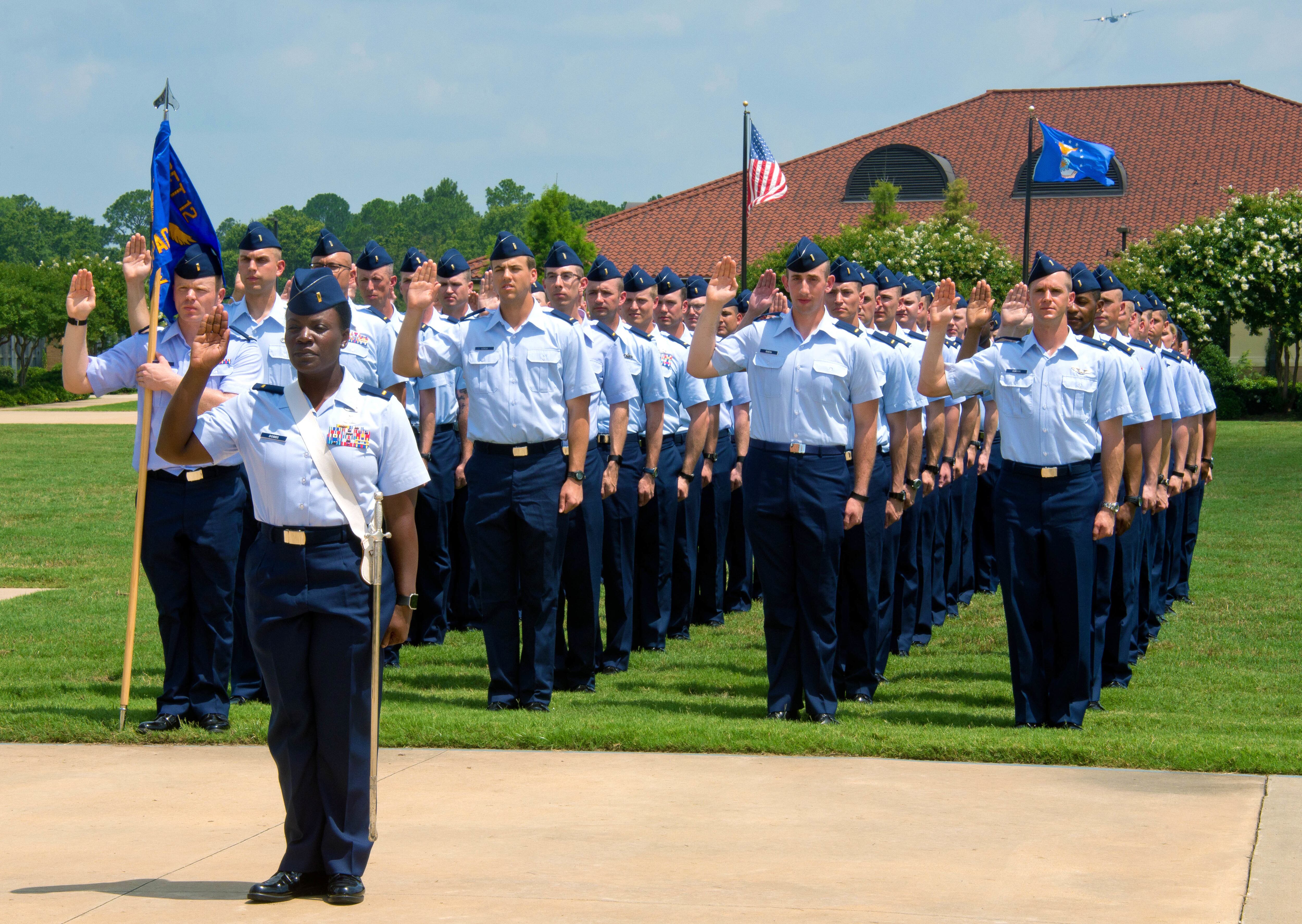By the time senior non-commissioned officers in the Air Force hit the point where they could earn their commissions, they know how things work around the service.
“They know how to march, they know how to shine shoes,” said Brig. Gen. William Spangenthal, director of operations and communications for Air Education and Training Command, in a May 10 interview. “They know how to salute, they know the basics of being an airman. And not only do they know them, they have been outstanding at it.”
So, when those master sergeants, senior master sergeants and chief master sergeants start trying to earn their commissions and become officers, Spangenthal said, it wouldn’t make much sense to waste days — even weeks — re-drilling them on basic concepts they’ve been doing for years.
That’s why AETC is about to start testing a new accelerated commissioning program for Officer Training School at Maxwell Air Force Base in Alabama, which aims to get SNCOs their commission in 14 training days, as opposed to the usual 40 days. With weekends off, the 14 training days will equate to nearly three weeks on the calendar.
Command officials on May 1 announced the fast-tracked program, which will hold its first test class in August and its second in October. The first test will include 36 SNCOs — 26 active duty, five reservists and five Air National Guard members — who completed the SNCO Academy course and were selected through a normal board process. If it’s successful, it could help the Air Force develop new ways to create officers that gives them credit for the knowledge and experience they already bring to the table.
RELATED

The new, streamlined program will essentially drop Stages 1 and 2 of OTS — the indoctrination and developmental phases — and will instead work more on learning “how to transition from the mindset of an NCO to the mindset of a commissioned officer,” said Col. Peter Bailey, the commander of OTS.
“Our 14 days, for the most part, is going to be solely driven on higher level, or graduate-level, leadership development,” Bailey said. “Which is something everybody should get, but the 14-day course will be focused on that.”
Spangenthal said he hopes the revised schedule will get SNCOs into training sooner, and will motivate them by taking their years of experience into account.
“We have the best-trained NCOs in the world, the best enlisted corps in the world,” Spangenthal said. “We took the best-trained airmen, selected from the very best that were going to OTS, and then down-selected so that we could improve upon what we’re already doing. I believe that not only will this be successful, we will have a better airman at the other end of that.”
Participants will be graded on a paper assignment, and will have to give a briefing. They will also have to lead their fellow classmates in a small-group exercise, where they attempt to solve a complex issue in a limited amount of time.
“One of the hardest things to do as a leader is to lead your peers,” Bailey said. “We are going to expect this select group of individuals to be able to do that as well. … That is the PhD level of leadership.”
It’s important that when it comes to those skills, airmen in the 14-day class get the same level of instruction as those in the 40-day iteration, Bailey said.
AETC will use surveys to see whether participants were motivated by being able to skip over redundant, unnecessary parts of the typical 40-day training curriculum, he said. If those surveys and other studies show the program was successful, it could be expanded further — perhaps even to award officer candidates competency credit for their pre-existing education, training and experience.
Ultimately, Spangenthal said, the changes are intended to further motivate SNCOs, by acknowledging everything they’ve already accomplished, and to get them working on becoming officers more quickly.
“There is a frustration with waiting to attend training, especially when that training is really taking a change into your trajectory from going from senior NCO to officer,” Spangenthal said. “I’d hate for folks to be completely demotivated, over time, when we could continue to move them out.”
Stephen Losey is the air warfare reporter for Defense News. He previously covered leadership and personnel issues at Air Force Times, and the Pentagon, special operations and air warfare at Military.com. He has traveled to the Middle East to cover U.S. Air Force operations.




